

Suunto Blog
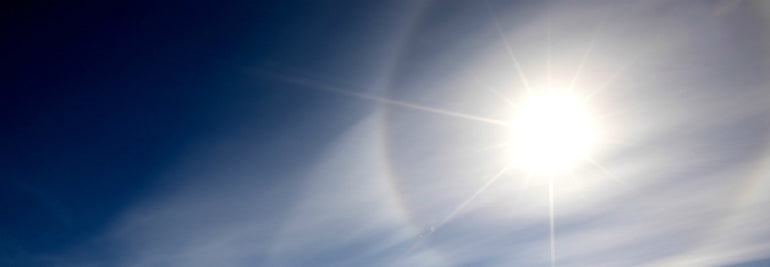
Jill Heinerth Joins Suunto at DEMA 2019
"I have dived and documented climate change firsthand for decades. How we plan for it and adapt to it in the next few years will determine the future of our civilization. That’s what draws me to scuba dive under the ice in the northern reaches of my homeland, Canada.”-Jill Heinerth wrote for the LA Times this week.
Jill Heinerth © Under teh sea ice near Bylot Island
Spending the first half of the year on the Underwater Canada Expedition, Heinerth uses her adventures to connect people to their water planet compelled to demonstrate how their lives impact the source. Jill and her team successfully visited every province and territory in Canada to dive and tell the tales of water from her experiences in each region.
Unstoppable in her plight explorer, cave diver and Suunto Ambassador Jill Heinerth is currently travelling and speaking to audiences and media platforms across Canada and USA on her book tour. Released in August, Into the Planet is a thrilling insight into places inside this earth you may not have imagined existed, that Heinerth has dived while bravely illustrating intense political issues and presenting hard evidence about the impacted ice caps and beyond.
Photo Courtesy of U.S. Deep Caving Team/Wes Skiles. © Diving with the US Deep Caving Team at Wakulla Springs, I felt like I was involved in a space shot. But there is no Mission Control to call for help on a journey that can reach miles into the earth.
With the upcoming DEMA Show fast approaching on the diving event calendar, Suunto Dive are super excited to announce Jill will be joining the Suunto stand to sign copies of her incredible adventures in documenting climate change, cave diving and film making for the past 30 years on 13th and 14th November 2019 in Orlando, Florida. Into the Planet is a riveting account of one of the most dangerous yet exhilarating pursuits in the world.
Jill Heinerth © Ice Formations
“As one of the most celebrated cave divers in the world, Jill Heinerth has seen the planet in a way almost no one has. In a workday, she might swim below your home, through conduits in volcanoes or cracks in the world’s largest iceberg. She’s an explorer, a scientist’s eyes and hands underwater—discovering new species and examining our finite freshwater reserves—and a filmmaker documenting the wonders of underwater life." Into the Pla
Often the lone woman in a male-dominated domain, she tests the limits of human endurance at every tight turn, risking her life with each mission. To not only survive in this world but excel, Jill has had to learn how to master fear like no other.” -Into the Planet by Jill Heinerth
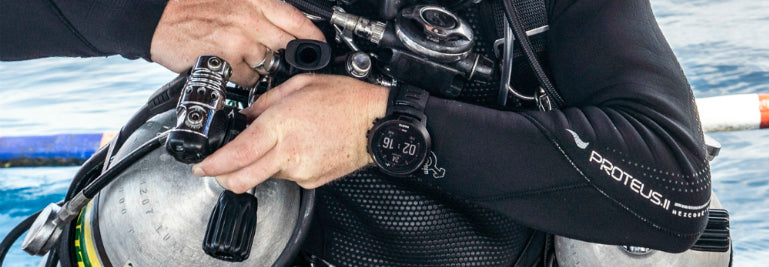
Introducing Alex Kydd
Suunto Dive are super excited to announce Alex Kydd is joining the Suunto Ambassador family. Photographer, marine biologist and diver originally from Melbourne, Australia, Alex now proclaims to being “based on” Ningaloo Reef Western Australia honoring the number of hours that he spends exploring underwater capturing his breath-taking images.
A rare shot of Alex Kydd in front of the camera taken photographer Alfred Minnaarr. ©
Alex trains like an athlete in his discipline. Practising every day, editing all the time and descending beneath the surface has led him to achieve artistry in his images. Alex's photos stand out above the rest with his dedication and passion aiding his continued development as a photographer enabling him to produce his unique shots.
“The ocean is my happy place. Every time you enter the water you never know what you might see and it's such a misunderstood ecosystem. Everything is connected and the more time you spend in it, the more you appreciate.”
Alex Kydd by photographer Alfred Minnaarr ©
Beginning his diving journey with snorkelling at 16 in the cool waters off Melbourne where he grew up, he later began scuba diving on a trip to Thailand in 2009 where he firmly solidified his love and respect for the ocean. Exploring his passion further Alex studied Marine Biology at university and four years ago he started his journey into the world of underwater photography and has had not had a chance to look back.
“At age 16 I first started taking photos. I had a very basic 2m waterproof camera for snorkelling in Melbourne. I progressed slowly to more upgraded cameras over the next few years. Eventually I had enough savings and I got myself a DSLR and housing. I was going out taking 500-1000 photos per day and editing them every night. This I believe, fast tracked me to learn. The best advice I can give for underwater photography is to find a mentor or like-minded people to learn from.”
Alex’s next stops on his extensive adventuring are Raja Ampat, West Papua, French Polynesia and Fiji where he will be exploring with his new dive computers including the Suunto EON Core, Suunto D5 and Suunto Tank POD. Alex’s favourite device at the moment is the Suunto D5. He also represents Fourth Element and Ocean Positive as a team diver.
Alex Kydd:
Instagram
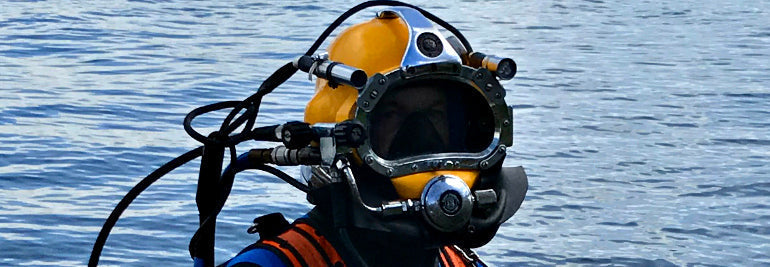
Tested by Real World Divers
Well known now for his higher-level training of professional and technical divers, along with a wealth of experience Johan began life in Netherlands and completed his first dive in Tunisia with CMAS in 1996.
Immediately impressed he purchased all his own equipment and rose to instructor level in a short time. He concentrated on specialising so he could broaden his knowledge which is where Johan developed his passion. After divng on the wrecks in the North Sea he found his calling and continued training in wreck diving and Trimix so he could explore deeper sites that hadn’t had their treasures pillaged like the wrecks at shallower depths.
“At greater depths I found the wrecks were more intact. I am talking about wrecks 80 meters and these wrecks are less exposed and also in better condition because they are not so exposed as those at shallower depths.”
Johan de With selfie.
To help him explore even more depth, his dive training led him onto rebreathers. He realised the limitation of many of his open circuit dives was the number of cylinders he could carry it seemed only natural for him to transition from open circuit.
“In 2015, together with Markku Diedrich, I dived a world record mixed team in Lake Thun, Switzerland (fresh, cold water) I was on OC and Markku on CCR where we travelled to a depth of 166.5m.”
Recording of the team’s deepest dive in a book of records.
Johan’s deep accolades do not end there.
“On the rebreather I dived into caves to a depth of 14m.
On open system in the caves up to 103m.
On the rebreather in open water up to 183m.
Open water on open system 166.4m.”
Johan now works as commercial diver and an instructor at the only private institute of commercial professional diving in the Netherlands. He also teaches deep technical diving and has his own gas filling station, Techduikschool Nederlands.
An important part of his diving is communicating information to the dedicated team of Dive Engineers at Suunto HQ as he puts computers to the test in the field and ensures they meet strict performance targets.
The infomation Johan feeds back allows the engineers to improve and fine tune devices allowing for the best user experience and in turn lets divers focus on the action and rely on their robust companions in the toughest conditions.
In action training professional divers in the Netherlands.
“I dive and test a lot for Suunto and share as much information as possible and give feedback about these computers both positively and negatively. I currently dive with the EON Steel and the EON Core and with the also since its release, the Suunto D5.
I use this during all my dives both OC in open water and caves and CCR in open water and in caves. As a backup I have my bottom timers with wet-note, and a spare computer in my pocket.
Everywhere and always, even with commercial diving I take the Suunto D5 into the water. I do this so that I also have a digital log of all my commercial dives.”
Suunto Dive computers stand the test of these extreme adventures alongside Johan.
Johan is not just an Ambassador for Suunto Dive, he represents brands including Ursuit and Bare drysuits, Tecline, Ammonite for lighting and Paralenz to capture the action on camera also with great satisfaction and pride.
"Regardless of environment depth or length of the dive or type of dive OC or CCR, technical diving must be feasible for everyone regardless of their financial status. These are brands that certainly think of the customer with price quality. I notice these companies listen and do a lot with the feedback given by us as Brand Ambassadors and testers of these materials.”
Jyri Vehmaskoski, Suunto EON Steel product team: "You don't dive if you don't trust your equipment. Everything we build is tested by real-world divers like us. Our gear is functional, accurate, and built to take a beating – and has hundreds of test dives to prove it."
Learn more about Suunto Dive products at suunto.com
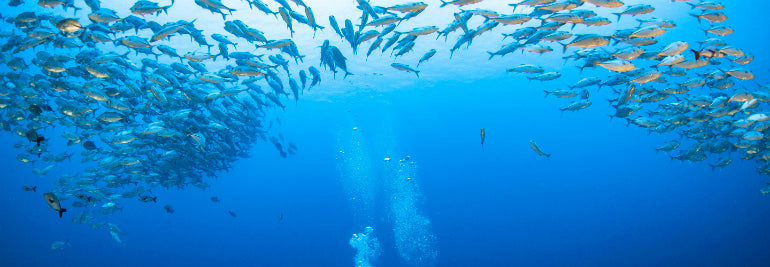
Changing the World from Behind the Camera
Steve Woods has amassed stacks of content illustrating his experiences underwater including thousands of photos that represent the true devastation of the human impact on our natural world. Through his photographic artistry he has successfully utilized his talent to tell the world this sad story that everything is not OK and we need to initiate change.
The Driving Force
Steve’s dedicated parents drove for hours across the UK so that they would be able to make their son’s dreams come true, they would take him to any shark exhibition they could locate until one day, there was to be a real shark on display. He was on the edge of his seat, apprehensive, and excited about what he was going to see. On arrival Steve rushed to find the shark only to be confronted with a papier maché model instead.
Unperturbed by the severe disappointment, the young wildlife enthusiast did not give up his quest to see a real shark.
© Steve Woods Photography
Steve began diving at nine years old and with his family and qualified alongside his parents and two sisters in Turkey when he was twelve.
“When I was a kid I used to watch old VHS documentaries, I had three or four of them that I collected over the years, relics from birthday and Christmas celebrations gone by I would view them over and over until they tapes wore too thin to play. At any chance I could I would beg my parents to take me down the local garden centre that had an aquarium inside to see the ragged tooth and the grey nurse sharks. I would sit there for hours just watching it slowly doing laps around and around the tank,” reminisces Steve.
Fifteen years later he saw the shark he had been dreaming of.
The Journey
Steve spent his early career working in journalism in the UK driven by a deep seated desire to change the world and make it a better place. Steve grasps the importance of illustrating the issues we face as a community and wants to reach people who perhaps have a lesser understanding of the impact of their everyday actions. During his journalist years he committed a lot of time uncovering the detrimental aspects of fish farming and fisheries and spent time underwater to see how the problems could be managed and minimised.
The 2008 shark experience Steve had in Indonesia stayed with him and he soon found himself burning his savings on new camera equipment, securing a one way ticket to Indonesia and leaving the world of British journalism far behind for a life of adventure and to use his photography skills to help protect the oceans.
Once he arrived in Lombok he took up work with local dive centres and photographed guests on their diving adventures so they could take home cool memories from their dive trips. The experience was valuable as it gave him a deeper understanding of how to capture light in water and the technicalities of shooting stills under the sea in order to capture the powerful and clear images he does today.
Soon he found himself involved in setting up a shark conservation foundation alongside a team of local groups and conservation projects called the Gili Shark Foundation.
© Steve Woods Photography
Gili Shark Foundation
“We began photographing sharks, we thought they were all the same as did the community. When we started identifying them we noticed there were many more than we initially thought there were. Gili Shark Foundation was a great way to get the whole island working together. Everyone was involved in shark counts, events and data collecting.” Steve had achieved what he set out to do by using his passion to highlight nature and the human impact.
After a successful time in the Gili islands he moved to Raja Ampat to continue working in conservation. Plastic is prevalent in remote areas, as well as most other environments and Raja is experiencing the same issues. Steve worked with the local communities to show them how to start and maintain effective conservation efforts in areas that have potential. The key to successful conservation projects is longevity with a clear plan for the future.
“The only way to change the human habits it by educating an involving the local communities. If you go in and rule over a population then it is an imperialistic act. When we came to Raja, the locals were well aware the plastic waste was increasing and that fish stocks were decreasing. We worked together to come up with a plan that would enhance their lives and make them more money.” Steve says.
Looking back on his career so far, he talks of many memorable moments working underwater including humpback whale, shark, manta encounters but he considers the smaller experiences that really stick with you as a photographer and as a human.
“Originally when we set up the shark foundation we were rescuing sharks from fisherman in Bali and then we got permission from the government to release them into a fishing projected area in Lombok. First time I had ever done anything like this. We completed research, spoke to people and made plans. Collected the animals and sent them off on a fast boat to be released into water. Who knows if they were going to survive, but we had given them a chance.” Steve says.
Three months later they identified that same shark by the dot pattern in the skin. Steve acknowledges this is a small achievement while 200-400 million sharks slaughtered every year, but this moment struck a chord and the feeling has stayed with him.
More and more he uses his photography working alongside marine conservationists to support their work and he hopes to grow this reach and increase the impact.
© Steve Woods Photography
The Future
“Visual language is so important nowadays, if people know they can change their minds.” Ask Steve how he will change the world in the future, he will tell you “one step at a time”.
© Steve Woods Photography
Suunto took five lucky competition winners of the trip to Raja Ampat on the Suunto D5 photo shoot, they were dive instructor Rosie Sheb'a from Australia, student Niko Lekhraj from Singapore, outdoor guide Anders Vestergård from Denmark, designer Xiaomo "Momo" Wang from China and nature activist Lilian Ellevog from Norway. See them diving in Suunto D5 images and videos.
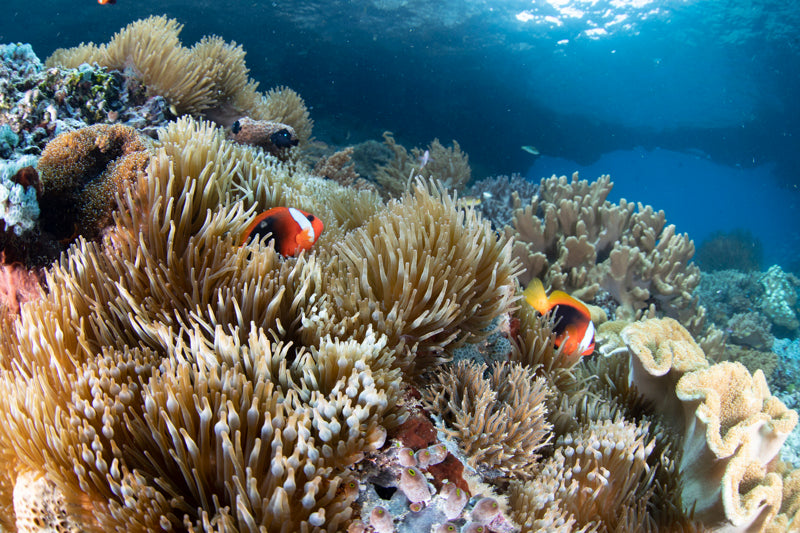
Max Ammer, Raja Ampat and the richest reefs in the world
Janne Kasperi Suhonen ©
Last year Suunto took a group of competition winners out to Indonesia for the Suunto D5 photo shoot to produce inspirational content. We had never explored these waters before and we soon saw the fruits of hard work. It was to say, nothing less than inspiring and the story behind this special location is just as wonderful.
Steve Woods Photography ©
The Best Diving in the World?
A young fisherman stood at the edge of the water on West Papua next to his canoe. Inside the canoe there were two turtles that he had caught on his morning excursion. Max Ammer walked past the fisherman by the canoe and immediately his interests were sparked. After a brief chat and small negotiation, the pair agreed a fair price for the sale of the turtles.
Once the money was exchanged, Max sprang into action and suddenly flipped the first turtle over the side of the canoe to which the fisherman promptly jumped in the shallow water after it. In the splash and confusion Max then took his chance flipped the other turtle off the other side of the canoe back into the ocean and watched it happily swim away. With the fisherman staring in awe at what was in his understanding a ludicrous occurrence, Max simply told the fisherman, “I like turtles”.
That same fisherman was soon to become the first dive guide at the five-star eco resort run by Max Ammer on Kri Island in a unique location where in an extraordinary case, the reefs are getting richer.
Steve Woods Photography ©
The Concept
Max Ammer went to Papua after a long life of nature filled early years, growing up in Nigeria on an animal refugee camp run by his parents. They nursed birds, crocodiles, chimpanzees to name but a few species back to health and released them into the wild if they could. These formative years have certainly affected Max and led him on his quest for protecting nature.
Max learnt to dive while in the special forces in 1982 but it was not an enjoyable experience for him.
“I learnt not how to quit but how not to quit.” Max talks of the key message he took home from his diving course.
Thirty years later and Max arrived in the pristine island paradise on Raja Ampat Islands, off West Papua in 1989 in search of wrecks and little else. He had a tip off whilst living in the Netherlands that led him to pack his bags and head off around the world in search of sunken treasures. The tip was from Max’s landlord who had been based in the Pacific at the end of the war and according to the story, he witnessed the Allied forces bulldozing aircrafts and Jeeps into the water.
At that time his job was building and restoring Harley Davidsons and classic bikes from the war so he was certainly interested. On arrival at the remote island he found the jeeps with ease and began removing the data plates to sell to members of the Keep Them Rolling group of classic car collectors for approximately 250$ a piece.
“I found them. I still have a glove compartment form a WW2 jeep over there now.” Max muses as he sits by the ocean beach front of the Eco resort in Papua.
He found the aircraft wrecks were slightly harder to find. After an initial investigation of the area he thought it best to return with a zodiac, a Bauer compressor and some equipment to dive in and find them. Morotai Island was the location of the Allied forces strategic base where 50,000 soldiers served under Supreme Commander for the West Pacific, General Douglas Macarthur. There were about 500 aircraft take offs every day from the base as he island was a major base with it being just a short step over to the Philippines and Borneo.
In his search for the wrecks around Morotai Island Max formed friendships with the locals. He opened up honest communications and he fell in love with their warmth. He describes their nature as friendly and at some point, he thought he wanted to work with them, he wanted to build something great and he wanted to see change in the future.
Steve Woods Photography ©
The Dive Show
The idea of the eco resort idea came to light as it was the perfect balance of working with the locals and working with people while protecting nature. Max took their ideas to a dive show with intention. He designed an iconic stand never seen at a dive show before and filled it with plants and local artefacts to entice people to the yet unbuilt resort. He decided that if he landed three sets of guests they would go ahead with the project plan; he sold two years’ worth of guests.
“I rushed back to the island and told the guys we have to build this thing the guests are coming!
Sometime later, lost in time, it was ready. I was actually walking out the back door with the build team as the guests walked in the front!” Max remembers fondly.
The locals lived a remote life and a lot of his team previously worked as loggers, fisherman, shark fin fisherman and poachers having had little or no access to education.
Now part of the crew, they have all ceased what they were doing and are serious about protecting the reef. They earn more money, have security for their families and access to education while working on this unique reef system that is getting richer in fish species and corals.
Since the beginning Max and the team have put the protection of the burgeoning ecosystem at the forefront of their priorities. This has proven to be a wise move as the fruits of the work can be seen in the thriving fish counts.
Steve Woods Photography ©
Conservation on Raja Ampat
A group of scientists from Conservation International visited the eco resorts on Raja and conducted studies and counts documenting the numbers of fish and coral species along the house reefs. They counted the largest amount of fish species in the world which led to National Geographic reporting on the resort which of course was fantastic exposure.
Twelve years later, scientist Gerry Allan returned to do another count and found that there had been an increase of 91 species in the same area totalling 374 species of fish on one dive, making it the richest area in the world.
Max puts this down to beginning the protection before the reef had been destroyed unlike many other marine protected zones. They are not wasting energy trying to revive an ecosystem that has already been destroyed, they are building on a top of a flourishing base and these hardy coral polyps seem able endure a larger fluctuation of sea temperatures than other species so are being transported around the word to be implanted and successfully grown in other systems.
“Scientists are looking to see if it will be possible to transplant our corals from our home to other areas where they are not surviving. We are not sure but people are researching this possibility. Perhaps our corals are more evolved, stronger, but I can’t really answer that yet.” Says Max.
The diverse variety of natural schemes in Raja around the two resorts include bay areas and swamps amongst the lush swarms of vegetation. The water is warm and the equatorial location has constant access to nutrient rich waters bringing in a healthy supply of food to support the great wealth of nature that relies on this orchestra of occurrence.
There are of course stresses on the environment, including those caused by running two resorts on the wild and remote island but Max sees it is all about balance in this situation.
“There are always stress on environment. What we tried to do at the resort is plan how we can help educate people for the future.
We also work with the government, but they do not do enough, they should be more involved in our opinion, and we try to work with them and educate them, then hopefully there can be encouraged to be more proactive and initiate change.”
As it stands Raja is able to handle more tourism but the expansion must be on the right terms and make the least footprint.
Regimented planning and organisation will be the key to successful growth including processes such as strict waste management schemes, green energy generation and protection of nature in the area will have a positive influence. Educating guests on their own environmental impacts as visitors is an important part of the eco experience. Beginning with using eco-friendly sunscreen that will encourage better behaviours that they can take home with them and spread the word amongst peers. The resorts are aided in their plight of protection by a constant stream of researchers including overseas students that come and study the area and collaborate with the ground team.
Environmental dangers are changing across Papua, including increased plastic pollution being a serious risk to the natural environment. The ground team are more than aware that they should be considerate and careful and encourage guests and visitors to adopt the same attitudes while sharing knowledge and ideas and working together so they can grow and concentrate on creating a wonderful future for the local area, its inhabitants and beyond.
“We hope in September to welcome five students to conduct their own research and look at different aspects of the issues we are facing here to help towards making things better and better for the future.” Max continues with an excited tone, “we love working with Conservation International and we are blessed to have this opportunity to work alongside them.”
Steve Woods Photography ©
Flying High for the Future
There is one surprising element of this conservation project that is somewhat unexpected, their collection of Bell 47 helicopters hidden inside a huge hanger just behind the beach that houses enough spare parts to build a further three helicopters. Max built the machines himself and the advantage is they are easy to maintain. They are the best auto rotator helicopters that keeps the weight in the tips of the blades allowing them to land and take off if they unfortunately fail. Max Ammer is interested in aviation and they serve as a useful tool in protecting the local area. Illegal loggers, fishermen and general rogue behaviours are easily spotted from above.
The passengers and captain can even see the dive sites from the air, flying over the water they can view corals, the aggregation of fish and whereabout they gather on the dive site. Best of all, they can see the large animals. Max talks of his record sightings, 132 manta rays on one flight and 33 dugongs on another.
“You owe it to yourself to be positive. Negativity is no good, be positive and look at all the things many things you can do at least you did the right thing. If you going to be negative it’s not going to do you any good.” Max Ammer, Raja Ampat Eco Resort and Papua Diving.
Videographer: Janne Kasperi Suhonen www.jannesuhonen.net/
Photographer: Steve Woods stevewoodsphotography.com
The lucky winners of the trip to Raja Ampat were dive instructor Rosie Sheb'a from Australia, student Niko Lekhraj from Singapore, outdoor guide Anders Vestergård from Denmark, designer Xiaomo "Momo" Wang from China and nature activist Lilian Ellevog from Norway.You can see them diving in our D5 images and videos and will also hear some of their comments from the trip during the next few weeks so stay tuned.
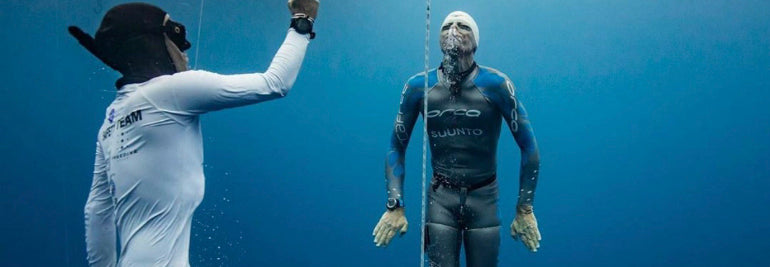
The Lowdown: CMAS 4th Outdoor Freediving World Championships 2019
On the white sun drenched shores of Roatan Island the gentle sound of the Caribbean Sea’s crystal clear water tentatively exploring the sand is lost behind the dissonance of diving activity coming from a dive platform located not far from the beach.
Divers are descending, safety protocols are being fine tuned, Alex St-Jean the official event photographer is testing his underwater camera equipment while the final training rehearsals are being observed in preparation for the CMAS World Championships that fin-kick off with an almighty duck dive on 6thAugust 2019 lasting five days. The event has been organized by Esteban Darhanpé at the Roatan Freediving School and Training Centre.
Chilling in the warm waters of the Caribbean Sea, Roatan Island is situated alongside a part of the 1000km of Mesoamerica Barrier Reef, the second largest reef system in the world.
The best of the best from around the globe are gathered to compete at the event. They compete not only to win but to be to a part of the freediving community.
A common misapprehension of freediving is that it is all about gaining the depth and in competitions this may be the case. Competition diving and its many disciplines are only one aspect of the sport. For most freedivers, the sport is just about hanging out with friends and exploring the underwater world.
“To the observer, freediving is all about serenity and calmness – a peaceful interaction with the underwater world. It is exactly all these things, which is why competition freediving presents such a unique challenge.” says Will Trubridge, Suunto Ambassador and World Champion.
“The conditions of a competition are slightly different to a world record attempt. In a competition you have an official pre-set time and there's a lot more people around – spectators and media. It's not as controllable as with a world record attempt,” says Will.
William Trubridge captured by photographer and freediver Alex St-Jean ©
Organizations
CMAS- The World Underwater Federation/Confédération Mondiale des Activités Subaquatiques founded in 1959 and is an international federation that organises underwater activities and events and is amongst the leaders in the scientific and technical research and development. It also acts as a training standards agency in snorkel and scuba training.
AIDA- International Association for the development of Apnea was created in 1992 after the film release for Big Blue. The rise in training freedivers and record breakers was developing at a vast rate and the AIDA was founded to keep track on the growing interests. The largest organization world wide of freediving event organizers, it also actively participates in scientific and technical research and development to help the world see freediving not as a thrill seekers sport, AIDA wants the recognition that “freediving is safe, fun, challenging and a fantastic blend of inner peace, concentration, technique, training, friends and team work”.
Disciplines
CNF- constant weight no fins is often talked about as being the purest form of freediving unassisted
CWT- Constant Weight with Fins discipline means the diver can wear fins, however they are only allowed to touch the rope to stop their descent and start their ascent. This discipline tends to give the deepest performances.
CWB- Constant Weight with Bi Fins. More monofins than you can shake a pair of bi fins at.
FIM- Free Immersion is a more relaxed dive where the diver can use the rope to pull themselves along using the rope, the diver is not allowed to wear fins on the dive.
Competition Terms
Safety Teams/Safety Diver- the Dive Safety Team is headed up by Italian Freediver Marco Cosentino and is currently holding the position of Chief of AIDA Safety Committee. He has a team of twelve safety divers there for support including Suunto Ambassador Sofia Gomez’s coach, freediver Johnathan Sunnex aka Johnny Deep.
Announced Dive Time- the official target time the diver will take to complete the dive, must be announced pre-dive. “You announce your dive on that day. If something goes wrong, then you don't have a second chance. It creates more of an element of chance. There is also a lot of sleuthing and spying to find out what other freedivers have done in their training to gauge how they're performing, and using that information to make pronouncements.” Says William Trubridge.
Official TOP- Time of Performance, as during the competition the organisers will be sticking to strict scheduling and the divers are assigned a time the dive must commence so all pre-dive preparation must be completed by the official TOP.
Duck Dive- the way a free diver ‘enters’ the water is by this type of dive as it gets the diver in a good position for descending and helps them along to few meters deep very quickly.
Freefall- once the diver reaches the point of negative buoyancy on their descent and begins to sink in a state of complete relaxation without finning down. This year we have spotted the athletes with strings tied around their thighs, Will Trubridge uses his to slide his thumbs in place so his arms stay positioned during freefall in order to conserve every bit of energy. It is this part of the dive that can induce the most pleasant feelings. Many freedivers feel euphoric as they enter an almost trance-like state.
Tag- a marker the diver must grab and bring back up to the surface when competing in depth competitions.
PB- personal best is the athletes, longest or deepest dive they have achieved. Can also be measured by distance.
Surface Protocol- the sequence a freediver must completion upon reaching the surface after a dive in a competition to convince the judges that the diver is lucid and not unconscious. The diver must face the judge’s direction remove googles and nose clip, give the OK signal and say in English “I am OK”/I’m OK” with a 15 second time limit.
Hypoxic- where the body is in a state of inadequate oxygen at tissue level. If the diver doesn’t get to the surface with enough oxygen to be lucid enough to complete the surface protocol they will be disqualified.
Cards- white, yellow or red. The judges will show a card at the end of each competition dive to signal whether the diver has had a fine performance with no penalties, yellow means the dive was completed with penalties and red signals disqualification from the dive.
World Championships Schedule
AUGUST 6th OPENING CEREMONY
Much like the opening ceremony of the Olympics we hope to see the atheletes parading around Roatan wielding flags, looking strong and generally building the hype, however it may be more of a technical meeting!
AUGUST 7th CNF COMPETITION DAY
Suunto Ambassador William Trubridge holds the world record in this natural discipline. Will set a new world record in freediving by diving to 101m with no fins in Dean's Blue Hole in the Bahamas. The new world record was set mere three days after he established an astounding new world record dive of one hectometre. Will's record-setting and mind-boggling constant no fins dive to 101 meters took 4 minutes and :08 seconds to complete.
Watch it here:
AUGUST 8th CWT COMPETITION DAY
Constant weight APNEA. This discipline means the diver can wear fins, however they are only allowed to touch the rope to stop their descent and start their ascent.
AUGUST 9th REST DAY
Rest day for re-ups on oxygen and rest.
AUGUST 10th CWB COMPETITION DAY
More monofins than you can shake a pair of bi fins at.
AUGUST 11th FIM COMPETITION DAY / AWARD CEREMONY / CLOSING PARTY
The winners get to take home a magnificent Suunto D5 dive computer and also collect a cash prize.
Sofía Gómez Uribe taken by freediver Johnny Sunnex @johnnydeep110 ©
Follow on Instagram @Suunto Dive to keep up with Sofía Gomez Uribe as she takes over for all latest news from the dvie platform.
Click here to see the offical Facebook page for the comptition.














































































